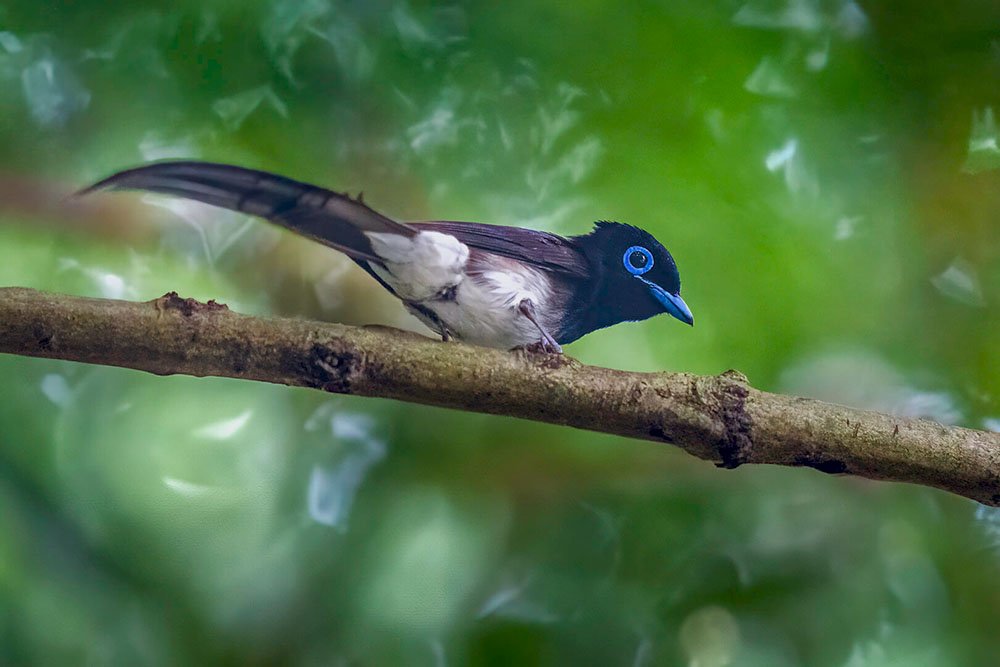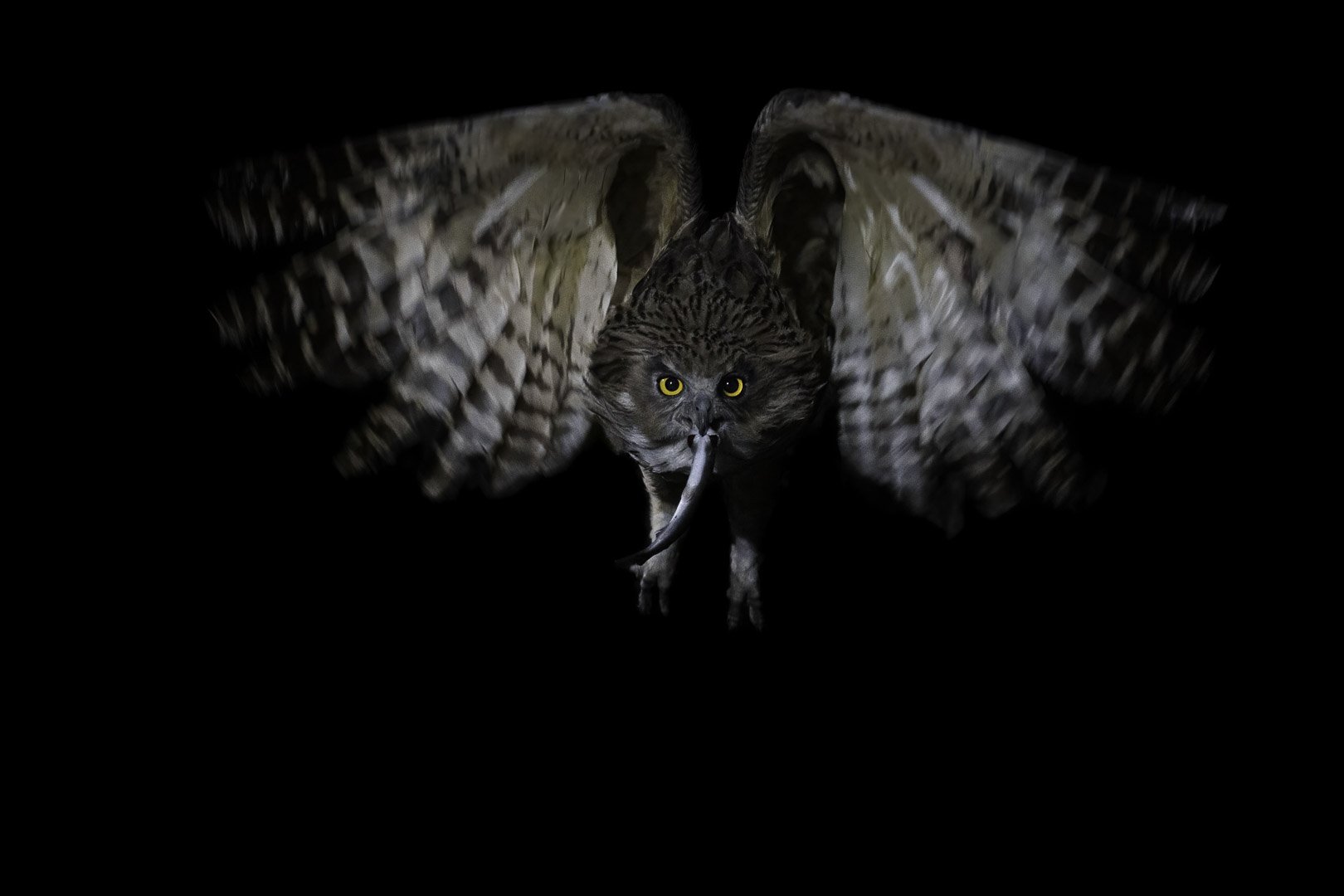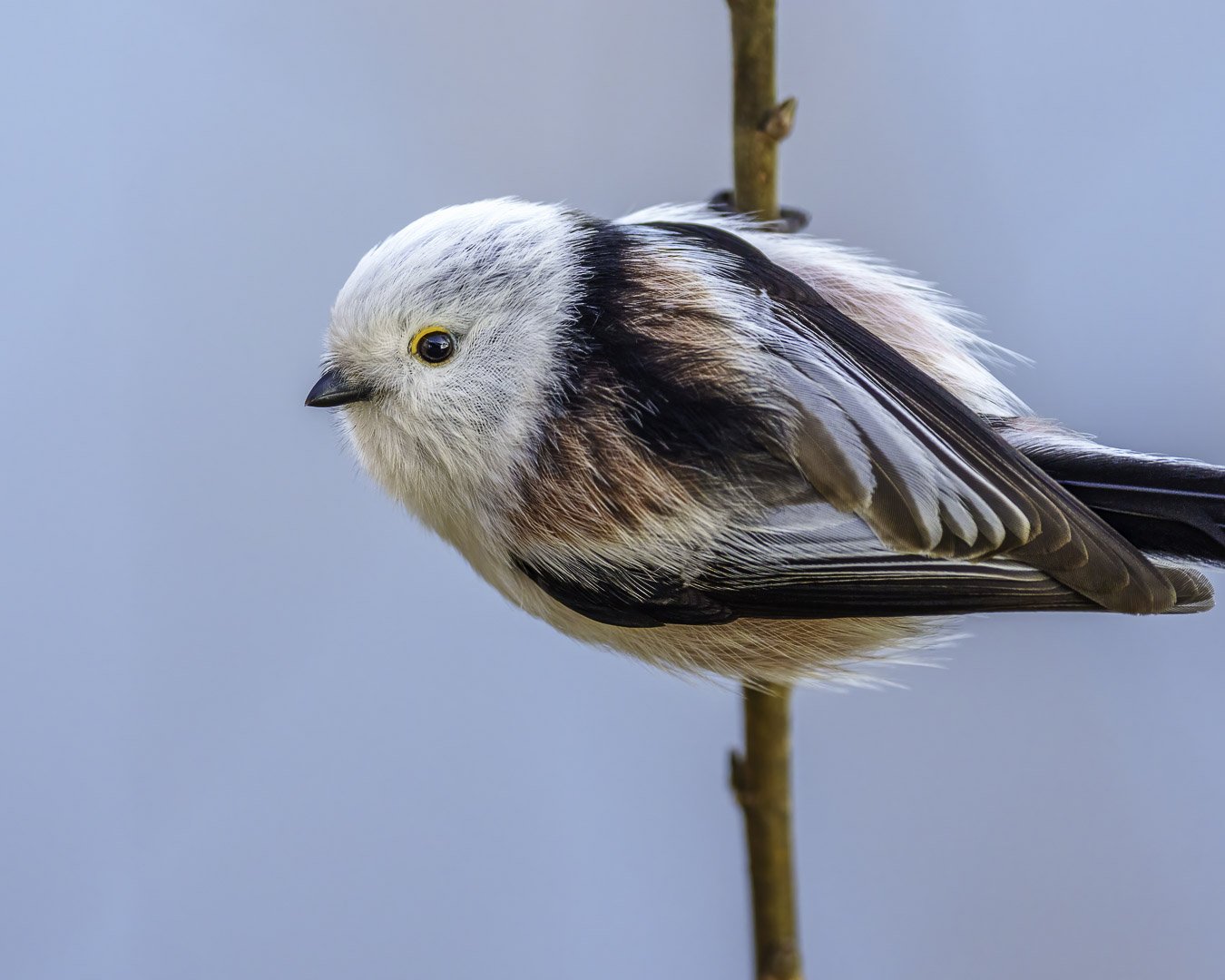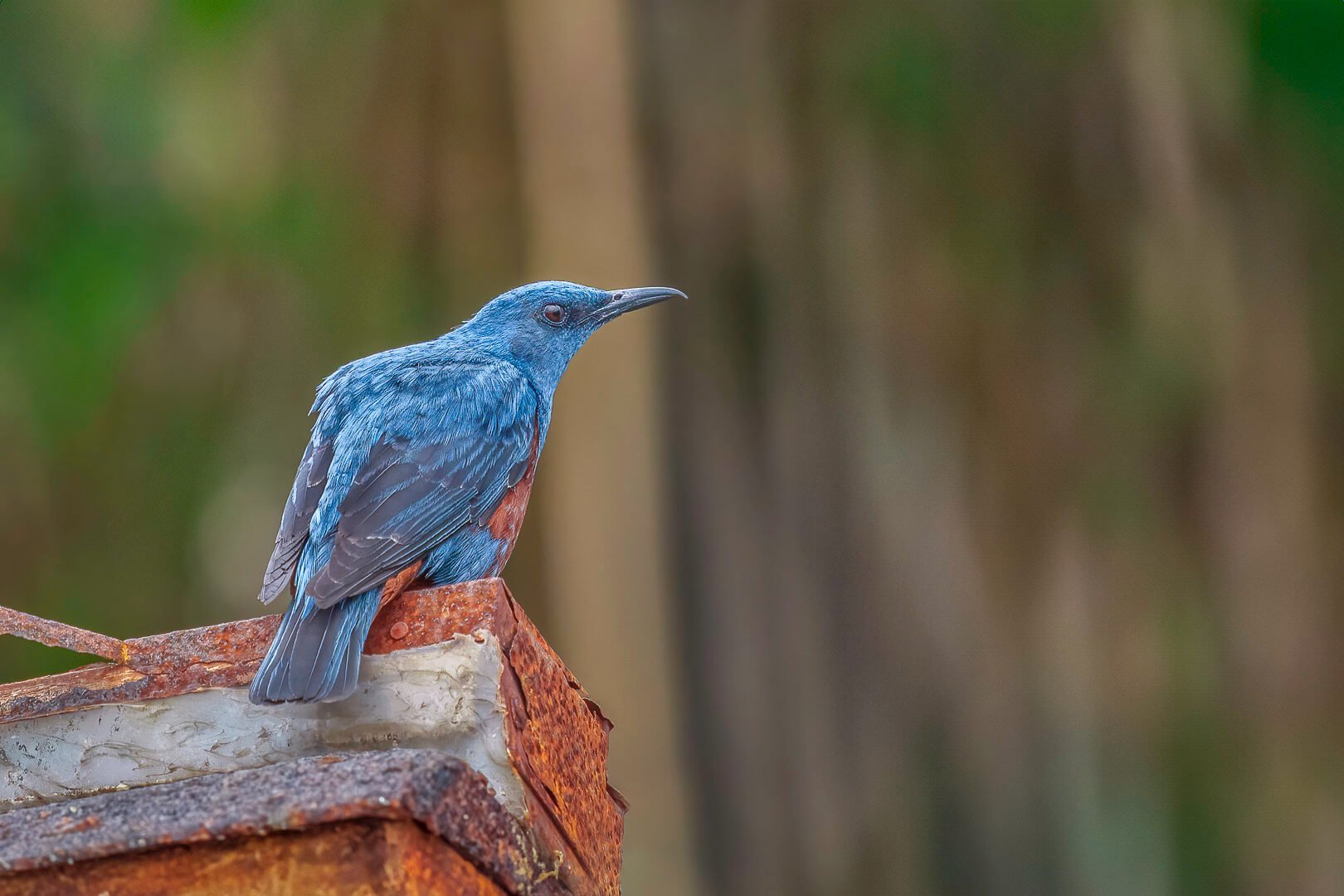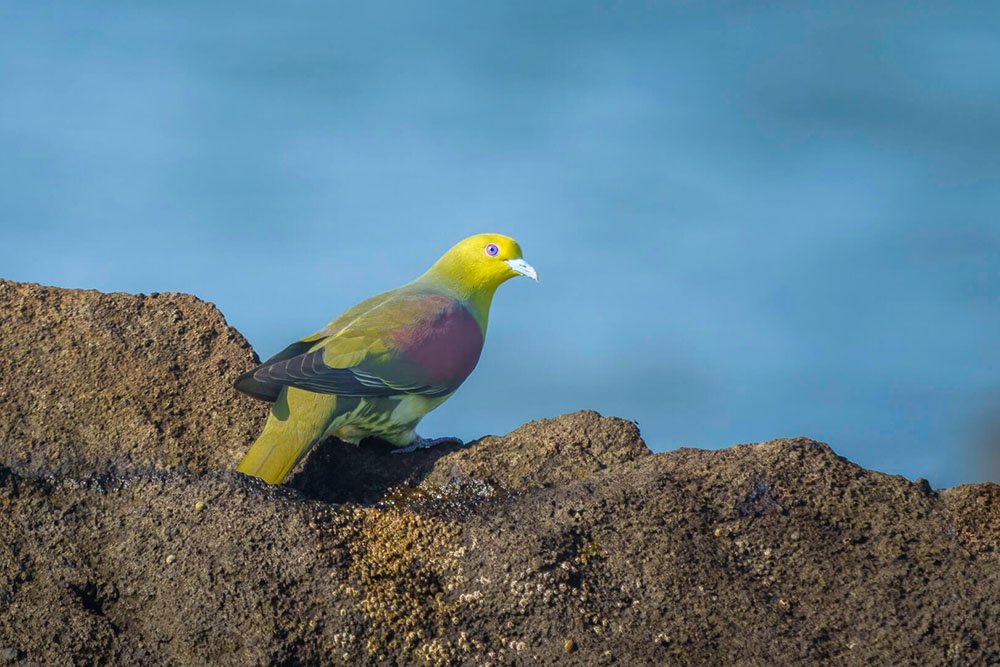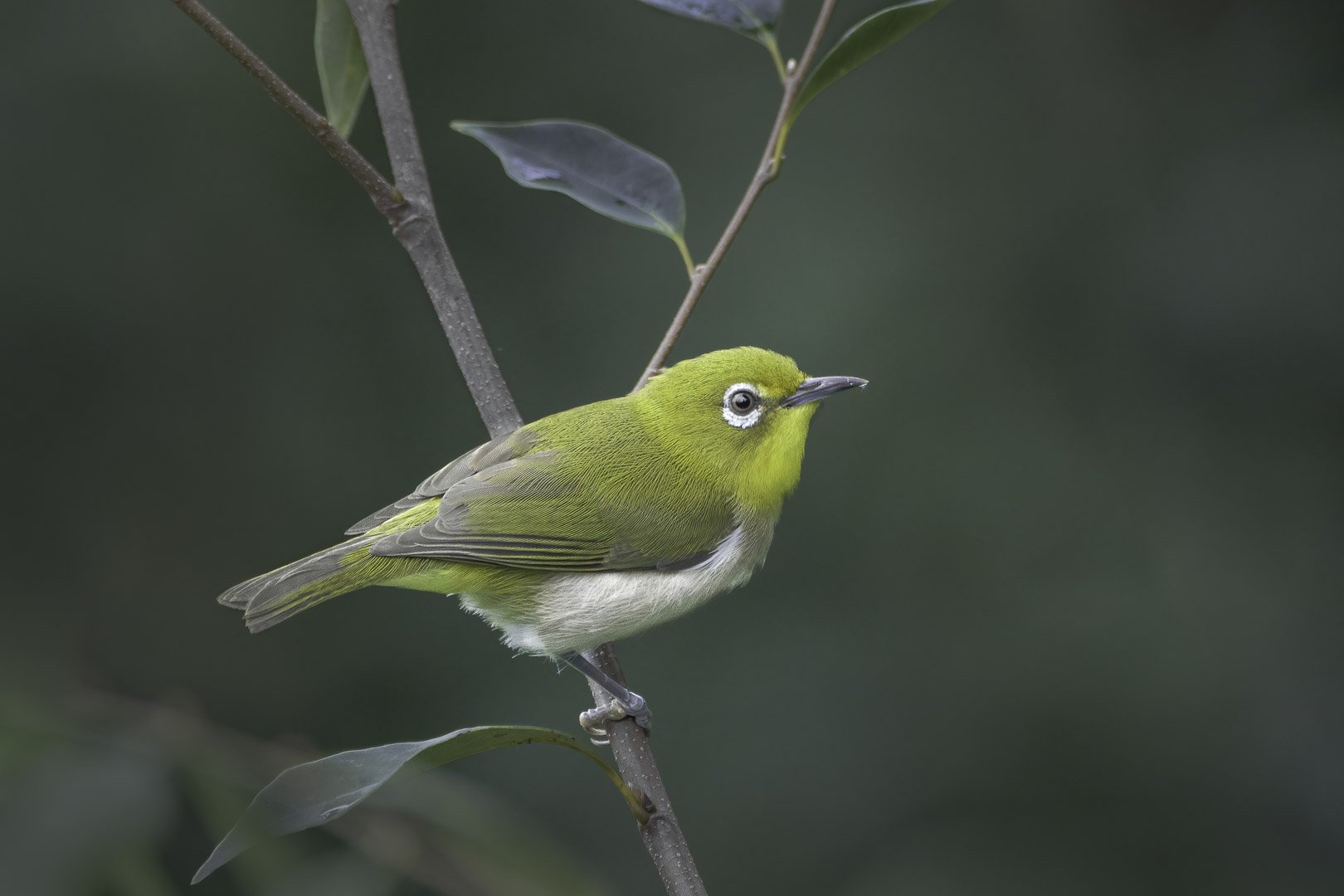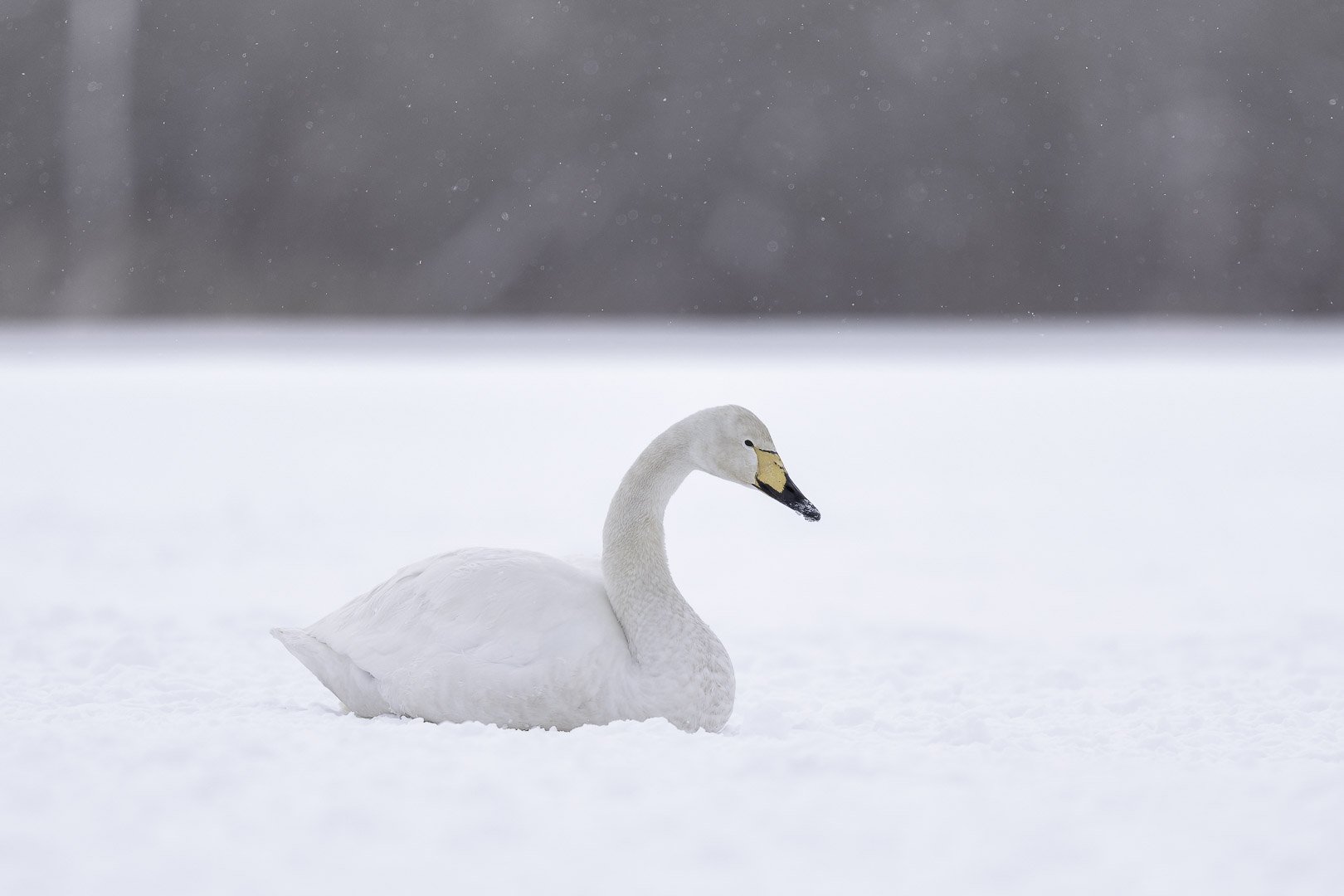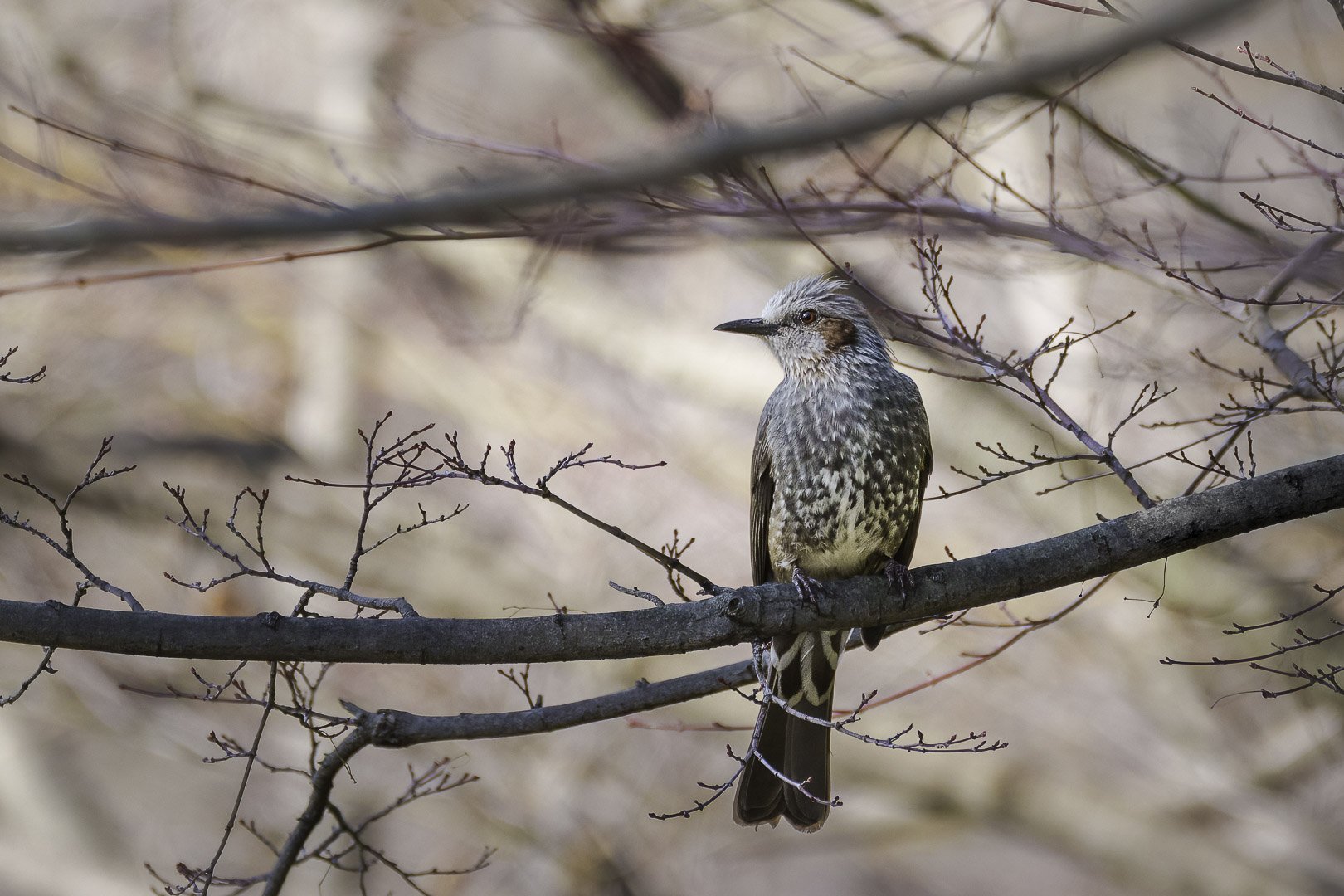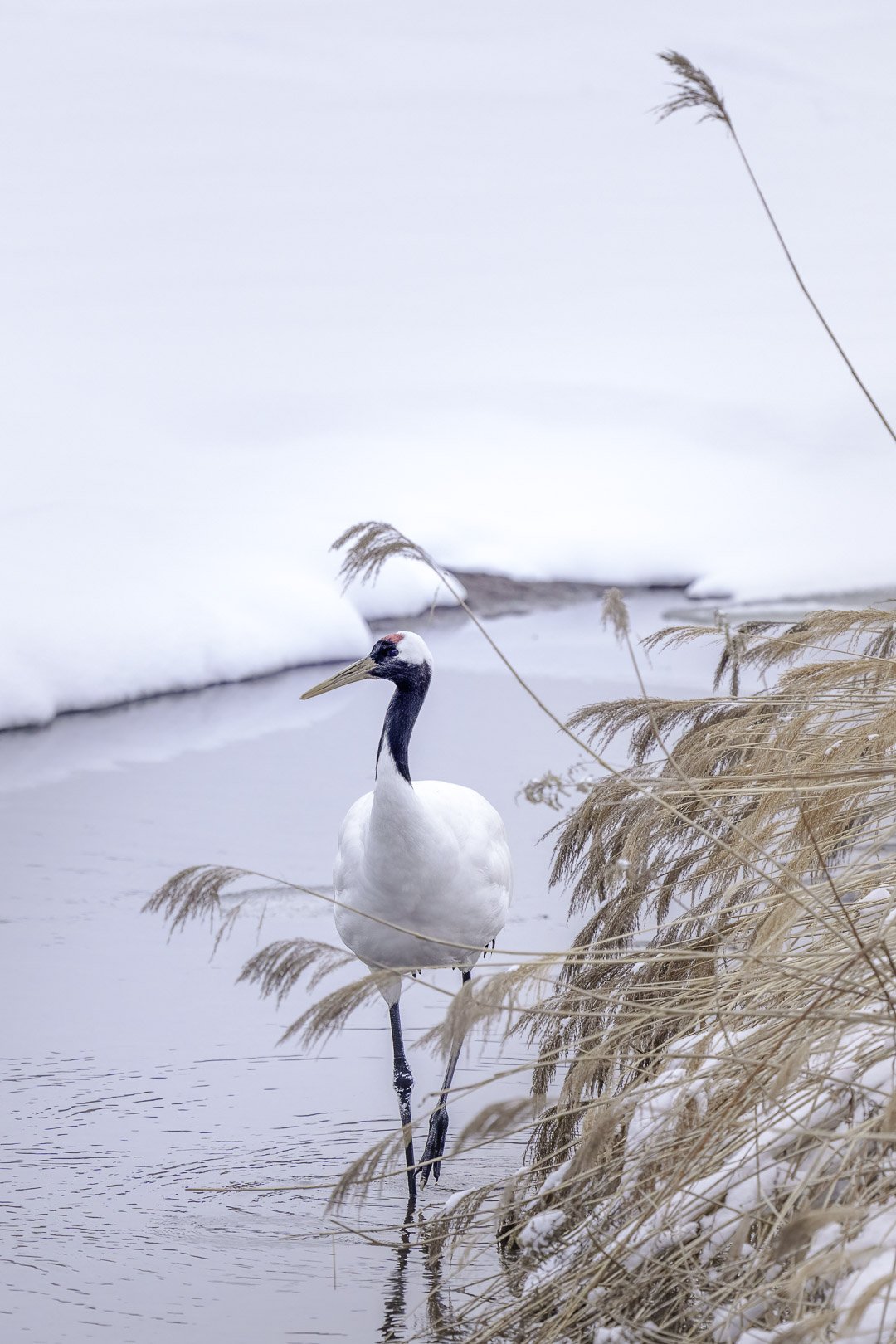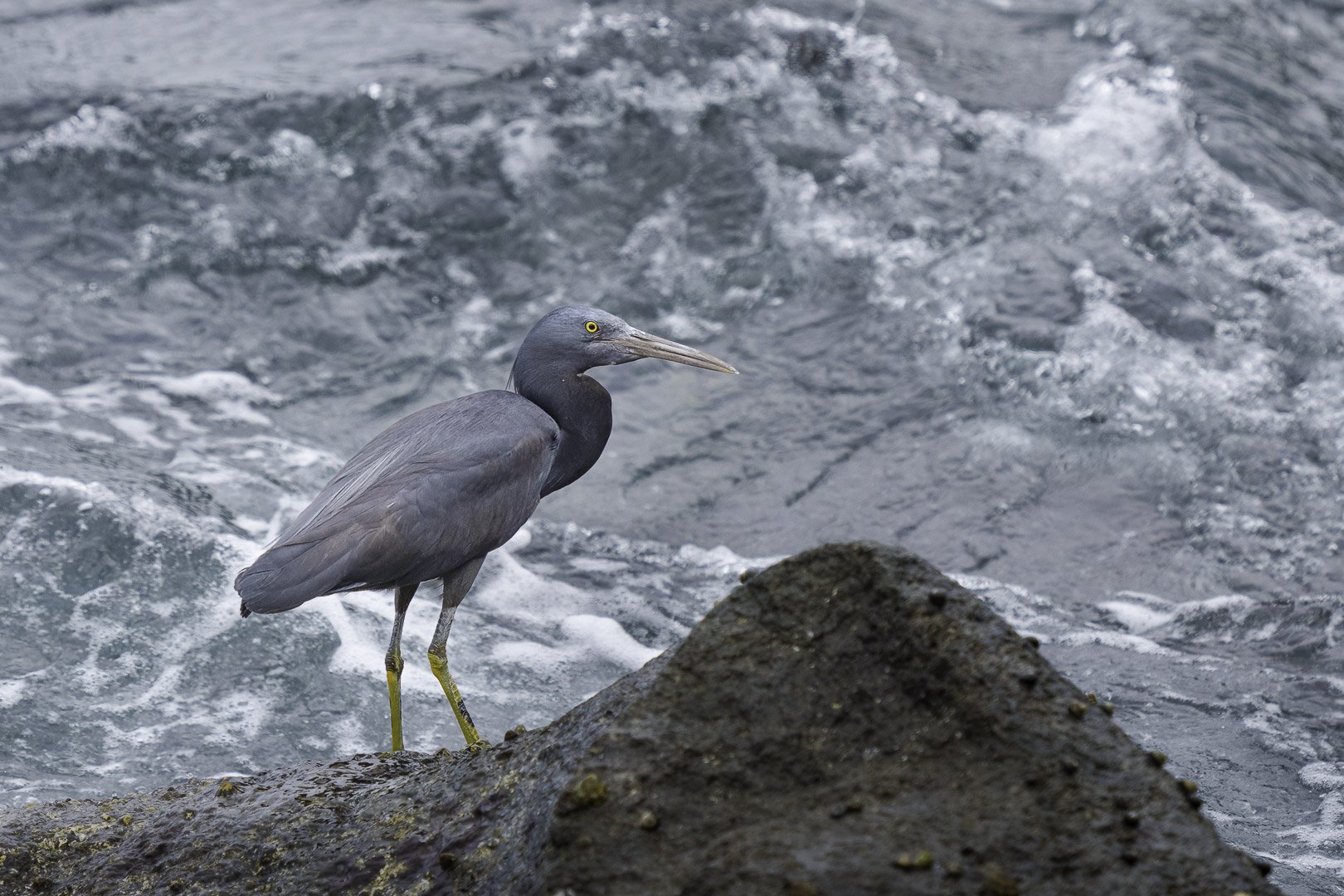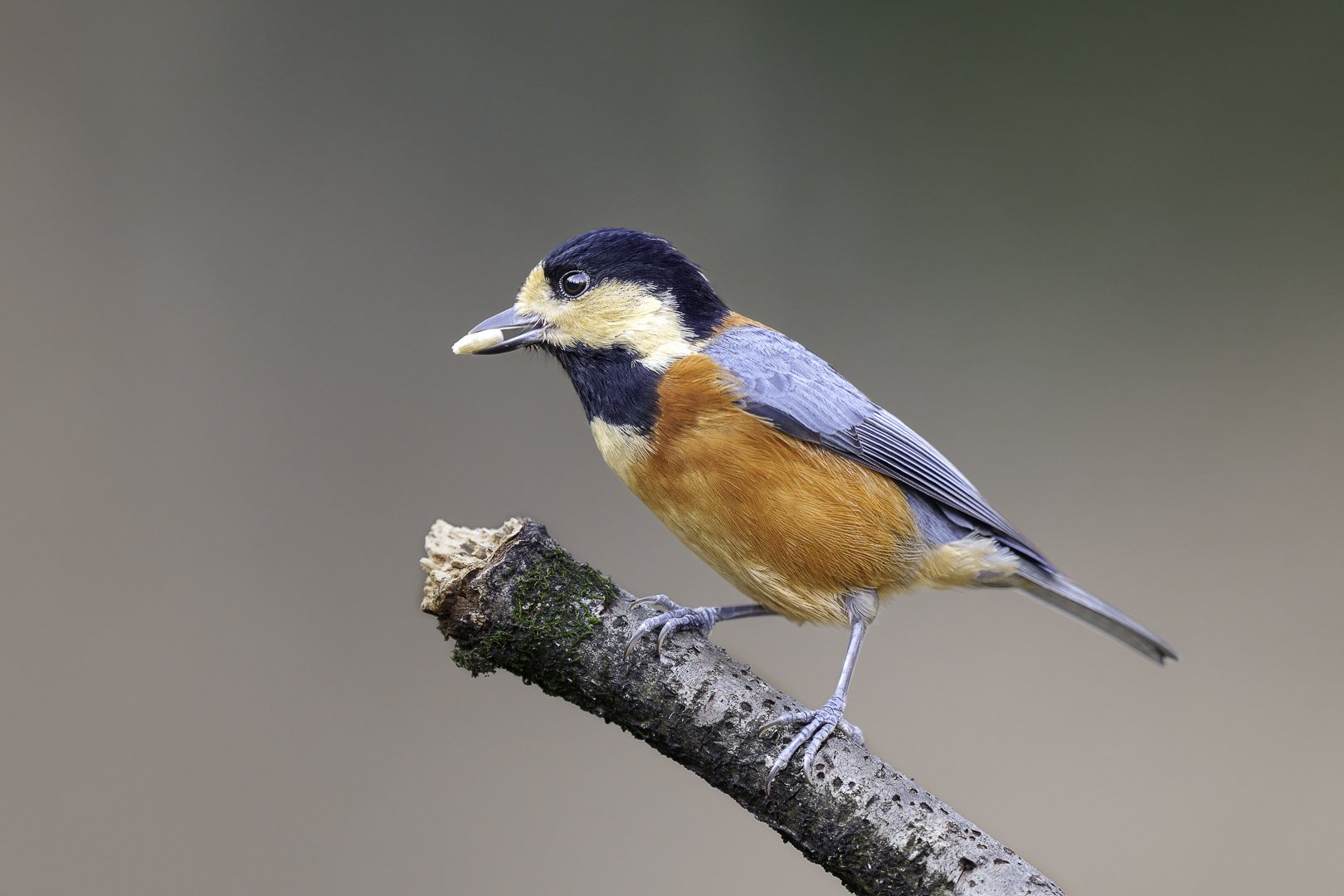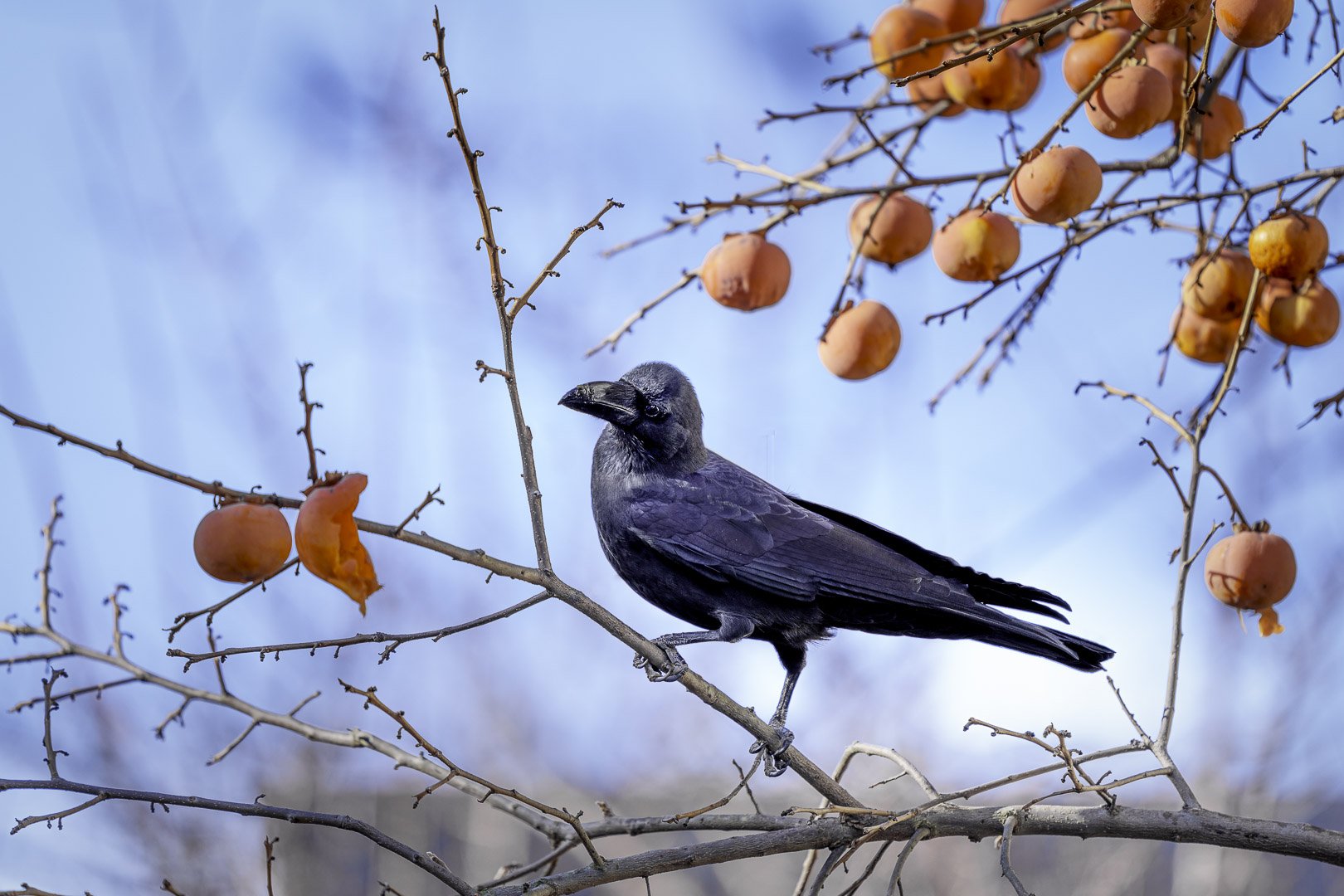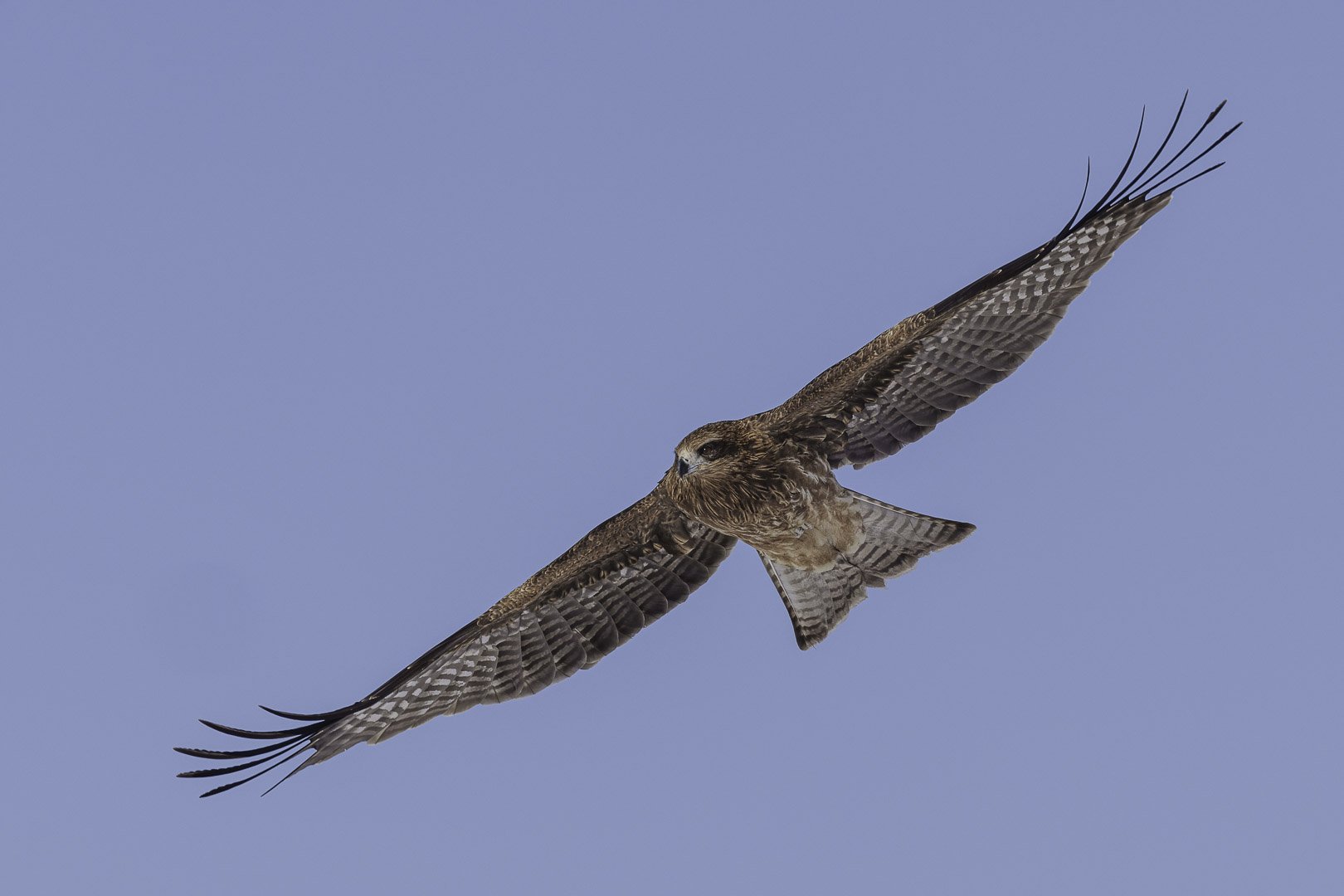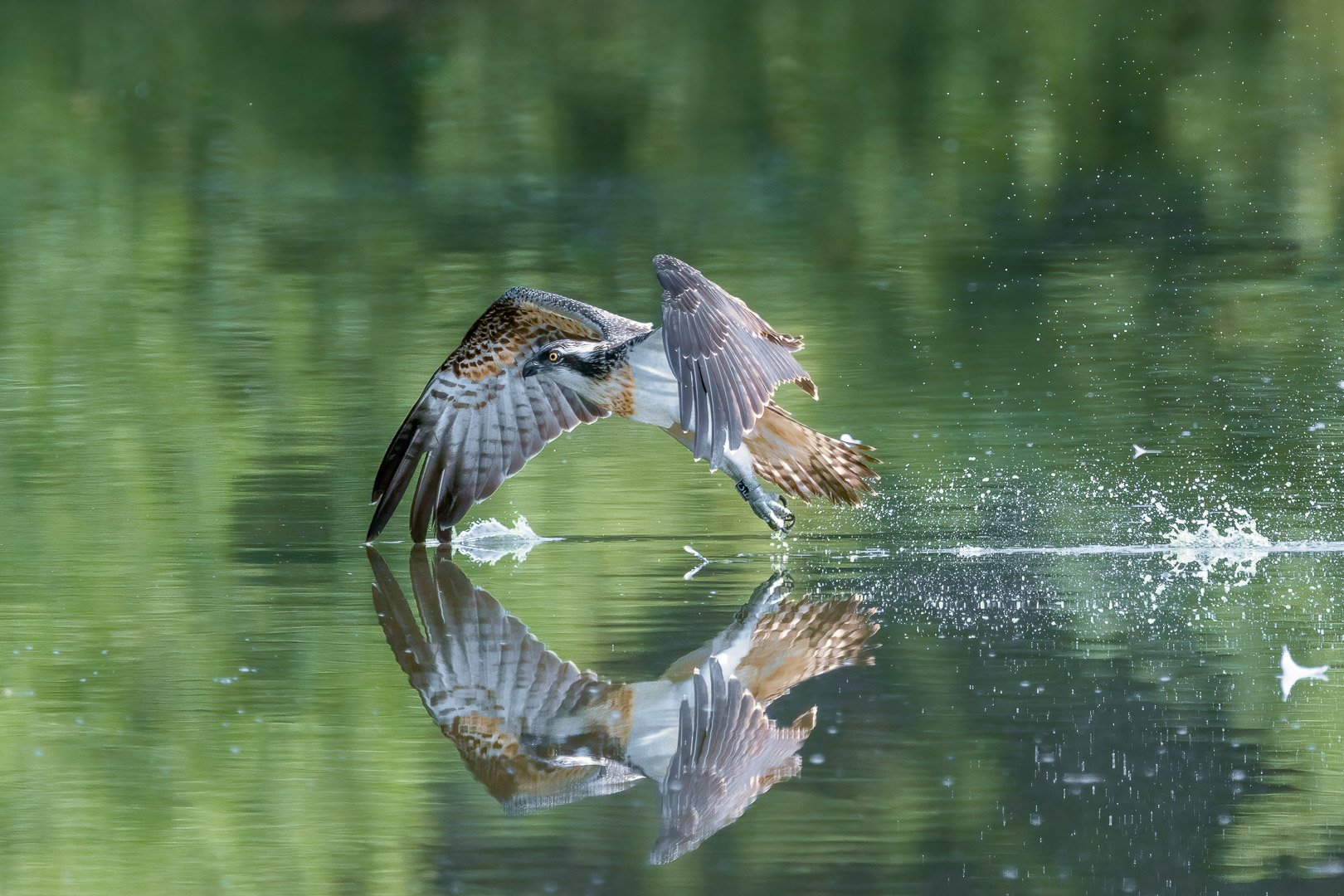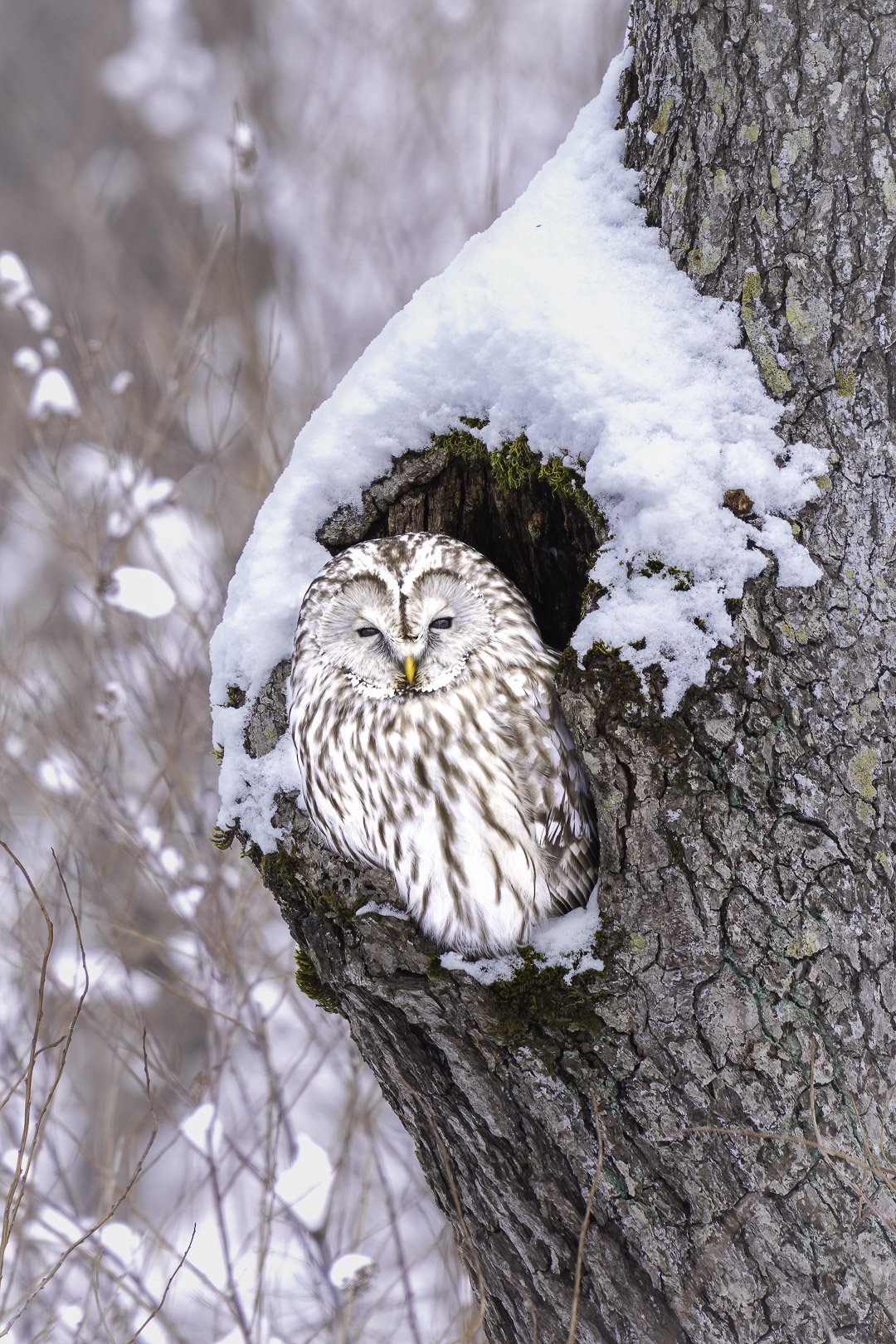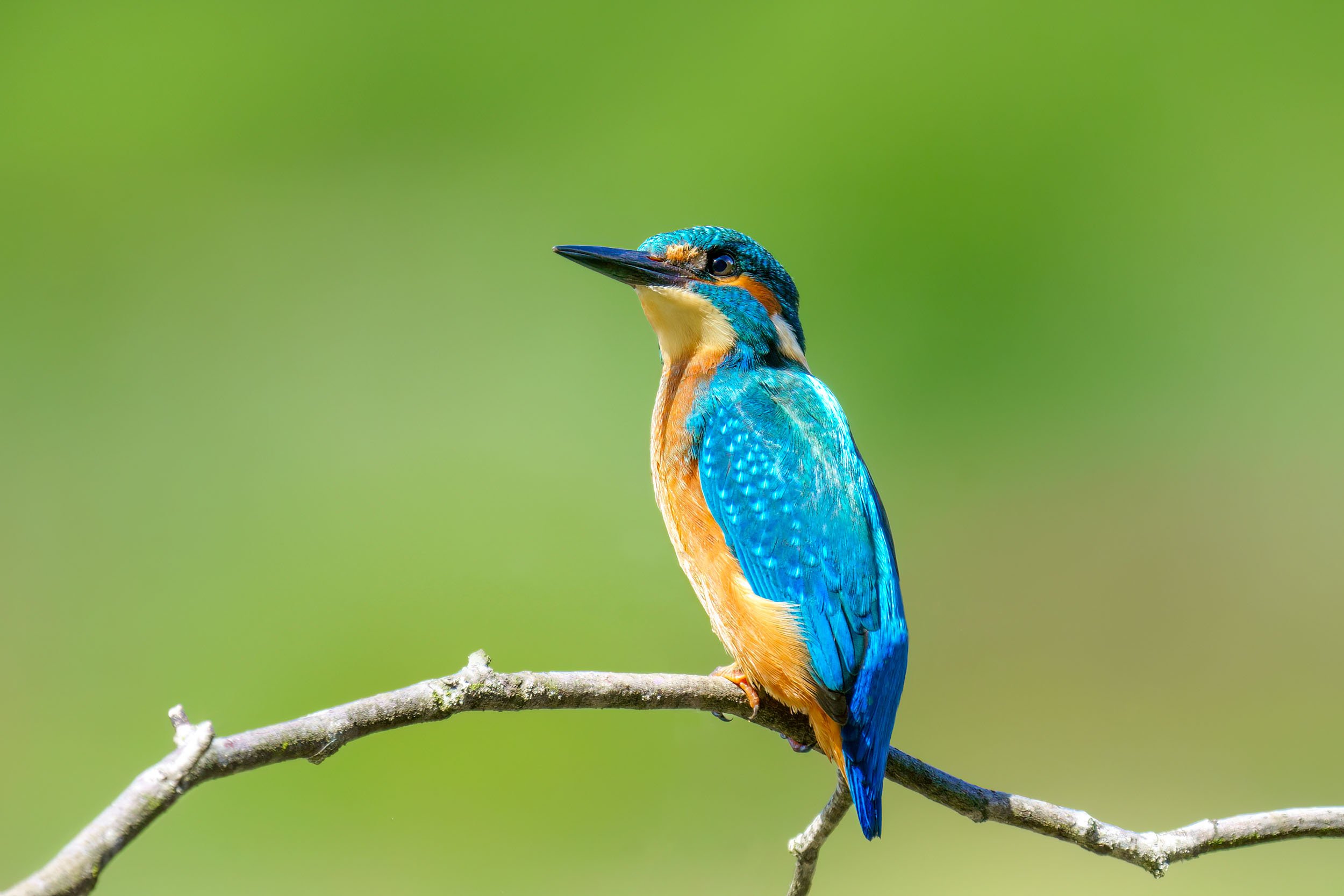Birds from Japan
Have you ever wondered about the diverse bird species that call Japan home?
From majestic eagles to colorful songbirds, Japan's avian population is both rich and varied. In this article, you'll discover the fascinating world of birds from Japan and what I observed through my camera during my adventures in Japan.
Japan's Native Avian Species -Exploring the Indigenous Birds of Japan
Japan is home to an incredible array of bird species, each adapted to the country's unique climate and geography. Whether you're a wildlife photographer, a birdwatching enthusiast, or just curious about nature, Japan's birds offer something for everyone. The country has different climate zones, from Hokkaido with its four distinct seasons to Okinawa with its subtropical climate. This variety offers a broad diversity of species, especially in the bird area.
A Guide to Native Birds Across Japan
Let's take a closer look at some of the most interesting native birds you might encounter in Japan:
Black Paradise Flycatcher (Terpsiphone atrocaudata)
Notable for its long tail feathers and striking black and white coloration, this flycatcher is a joy to watch in flight.
Distinctive Appearance: The Black Paradise Flycatcher, also known as Sankōchō in Japan, is notable for its long tail, especially in males, which can be twice the body length. Males are 35-45 cm long with black-violet heads and bright blue eye rings, while females are smaller (17-18 cm) with dark brown plumage and no extended tail feathers.
Habitat and Range: This species breeds in Japan, particularly in Shizuoka Prefecture, and inhabits moist forests in hilly and mountainous regions. It is also found in southern and southeastern Asia, including Korea, Taiwan, and the northern Philippines. In winter, it migrates to warmer areas like the Malay Peninsula and Sumatra.
Diet and Foraging: The Black Paradise Flycatcher feeds mainly on insects, catching them mid-flight with its agile movements. Its diet includes flies, beetles, and moths, supplemented by small fruits and berries.
Breeding: The breeding season is from May to July. Both parents share incubation duties, which last 12-14 days, and the chicks fledge 8-12 days after hatching.
Conservation Status: Habitat loss due to deforestation has led to a decline in population, particularly in eastern China. Conservation efforts are needed to protect this species from further decline.
Blakiston's fish owl (Ketupa blakistoni, Synonym: Bubo blakistoni)
This large owl, known for its broad wings and powerful talons, thrives in the old-growth forests near rivers and streams in eastern Russia, China, and Japan.
Distinctive Appearance: Blakiston's Fish Owl (Bubo blakistoni) is among the largest owl species in the world. It is known for its broad, rounded wings and powerful talons. The owl's plumage is a mix of brown and cream, providing excellent camouflage in its forested habitat. It features prominent striking yellow eyes, and a bulky body. Adult owls can have a wingspan of up to 250 cm, making them formidable predators.
Habitat and Range: This owl species inhabits dense, old-growth forests near rivers and streams in northern Japan, particularly on the island of Hokkaido, eastern Russian and northeastern China. Blakiston's Fish Owl requires riparian habitats, as these areas provide essential resources for hunting and nesting.
Diet and Hunting: The diet of Blakiston's Fish Owl primarily consists of fish and small mammals. Its powerful talons and excellent night vision make it an adept hunter. The owl typically hunts by perching on branches overhanging the water, waiting to swoop down and catch fish near the surface. Additionally, it preys on amphibians, birds, and other small animals found in its habitat.
Conservation Status: Blakiston's Fish Owl is classified as “Endangered” by the IUCN due to habitat destruction, logging, and river pollution, which threaten its survival. Conservation efforts are focused on preserving its natural habitat and mitigating human impact on the environment.
Daurian Redstart (Phoenicurus auroreus)
This small bird is known for its striking orange belly and black face, making it a vibrant addition to Japan's winter birdlife.
Distinctive Appearance: The Daurian Redstart shows clear differences between males and females. Males have gray heads, black faces, and bright orange bellies, with tails that are black and orange. Females are warm brown with orange rumps and noticeable white wing patches.
Migratory Pattern: This bird species winters in Japan and is native to regions like Manchuria, southeastern Russia, northeastern Mongolia, central China, and Korea. In winter, they migrate to Japan, Korea, the southeastern coast of China, and Taiwan.
Diet and Foraging: The diet of the Daurian Redstart consists of insects, berries, and seeds. During the breeding season, insects make up the bulk of their diet. Their slender bills are naturally adapted to catching food both on the ground and in the air.
Long-tailed Tit (Aegithalos caudatus)
With its distinctive long tail and fluffy appearance, the long-tailed tit is a charming sight in the forests of Japan. This little bird is a big star in Japan and has fans on all the Japanese islands. It is a popular target for photography and birdwatching. The Japanese often say "Kawaii" (cute) when they see it. You will also find fan merchandise such as T-shirts with the little bird on them, that's how popular it is.
Distinctive Appearance: The Long-tailed Tit is a small bird, 13-16 cm long, with a notably long tail and a fluffy, round body. It weighs between 6 and 10 grams. Males and females look similar, though their plumage can vary by region, with some having darker heads and others white.
Habitat and Range: Found in deciduous and mixed forests, as well as parks, the Long-tailed Tit is a resident bird throughout the year. It builds its nests in dense undergrowth using moss, plant fibers, and feathers.
Diet and Foraging: This bird primarily eats small insects and arthropods, including their larvae and eggs. It forages on the outer branches of trees and adapts its diet seasonally, adding seeds and berries in winter.
Breeding: The breeding season is from June to September. Both parents help build the nest and feed the chicks, which fledge in about 8–12 days.
Conservation Status: The Long-tailed Tit is not endangered, thanks to its adaptable diet and habitat preferences.
Photography Tips: Use a lens of 400 mm or longer for the best shots. The Long-tailed Tit is easy to photograph, especially in parks and forests.
Blue Rock Thrush (Monticola solitarius)
Often found in rocky coastal areas, this thrush's deep blue plumage is truly captivating.
Distinctive Appearance: The Blue Rock Thrush, at 20 cm long and weighing about 50 grams, is known for its striking blue-black plumage in males and grayish-black with lighter spots in females. This sexual dimorphism makes it easy to distinguish between the sexes.
Habitat and Range: Found year-round in Japan and either migratory or resident in Europe, this bird thrives in mountainous areas, rocky coastlines, and ruins. It prefers elevated spots to survey its surroundings.
Diet and Foraging: Primarily insectivorous, the Blue Rock Thrush hunts beetles, flies, and butterflies from high perches. It also eats berries and fruits, often foraging close to water sources where it bathes regularly.
Breeding: Nesting in rocky crevices, the Blue Rock Thrush lays four to five eggs in May. The incubation period is about 12-13 days, and chicks fledge after 18 days. Both parents care for the young.
Observation Tips: To spot this bird, look in mountainous regions and along rocky coasts. Its melodious song is a good indicator of its presence. Use binoculars for a closer look.
Photography Tips: A lens of at least 400 mm is recommended. Though moderately challenging to photograph, their habit of perching on high vantage points provides good opportunities.
Conservation Status: The Blue Rock Thrush is not endangered, thanks to its adaptability and varied diet, which support stable populations across its range.
White-bellied green pigeon (Treron sieboldii)
This striking pigeon is known for its bright-green plumage. The name “White-bellied Green Pigeon” is misleading, as the white belly is not as noticeable as the light green feathers. It inhabits forested areas in East Asia and primarily feeds on fruits and berries. A unique feature is that during the breeding season, it flies to the sea to drink saltwater, performing breathtaking aerial maneuvers to avoid the high waves.
Distinctive Appearance: Siebold's Green Pigeon is a medium-sized bird, around 33 cm long and weighing between 180 and 250 grams. Males have yellow heads and chests, cream-colored bellies, and dark red wings, while females are uniformly olive-colored.
Habitat and Range: Found in Japan, China, and Taiwan, this pigeon lives year-round on the Japanese islands of Honshu, Shikoku, Kyushu, and Okinawa. It migrates seasonally in other regions. Preferring deciduous and mixed forests, it moves to coastal areas in summer for minerals and food.
Diet and Foraging: The pigeon primarily eats fruits and seeds. Unique to this species is its coastal migration to drink seawater for essential salts and minerals. At the coast, they perform “tail dipping” immersing their tails in seawater, though the reason for this behavior is unclear.
Breeding: In June, Siebold's Green Pigeons build saucer-shaped nests in trees and lay two white eggs. Breeding behavior has only been documented in Japan, discovered post-World War II.
Observation Tips: Look for these pigeons in forests or coastal areas during their seasonal migrations. Their distinct "Ao-Ao" call can help locate them. Patience and binoculars are essential for spotting these elusive birds.
Photography Tips: Use a lens of at least 600 mm for the best shots. Photographing these birds is challenging due to their shy nature and dense habitats.
Conservation Status: Siebold's Green Pigeon is not endangered, but habitat protection is crucial for their continued survival.
Steller's Sea Eagle (Haliaeetus pelagicus)
One of the largest eagles in the world, the Steller's sea eagle is a powerful predator found in Japan's northern regions. In the area of the Shiretoko National Park, you will find hundreds of these birds during the winter time, as they winter in Japan.
Distinctive Appearance: The Steller's Sea Eagle is an imposing bird and the largest sea eagle in the world, with a wingspan reaching up to 2.8 meters. It measures between 85 and 105 cm in length and weighs between 5 and 9 kg, with females generally larger and heavier than males. Its plumage is predominantly dark brown or black, with a white head, neck, and tail. The beak and talons are strong and yellow, complementing its piercing yellow-brown eyes.
Habitat and Range: This majestic eagle is native to East Asia, found in regions such as the Russian Far East, Japan, Korea, and China. It inhabits areas near water bodies like rivers, lakes, and coastal regions. In Japan, particularly in Hokkaido, it is commonly seen during the winter months. In Russia, it is present year-round, though it migrates seasonally.
Diet and Hunting: The Steller's Sea Eagle primarily feeds on fish, but it also consumes carrion and other birds. It is an adept hunter, utilizing its powerful beak and talons to catch and consume its prey. This eagle plays a vital role in its ecosystem as both a predator and scavenger.
Conservation Status: Despite its formidable presence, the Steller's Sea Eagle faces threats from habitat loss, pollution, and illegal trade. Conservation measures have been implemented in countries like Japan, Russia, China, and South Korea to protect this species. The International Union for Conservation of Nature (IUCN) lists the Steller's Sea Eagle as vulnerable.
Observation Tips: To watch the Steller's Sea Eagle, visit areas near lakes, seas, and rivers in Hokkaido, Japan, during winter. These locations offer prime opportunities to see these eagles in action, hunting and soaring above the water.
Photography Tips: Capturing images of the Steller's Sea Eagle can be challenging due to its elusive nature. A lens of at least 600 mm is recommended to get detailed shots from a distance. Patience and timing are essential, especially in their natural hunting grounds near water bodies.
Warbling White-eye (Zosterops japonicus)
This small, agile bird, known for its distinctive white eye-ring and olive-green plumage, thrives in various habitats across East Asia, feeding on nectar, fruits, and insects.
Distinctive Appearance: The Warbling White-eye, also known as the Japanese White-eye, is a small, round bird measuring between 10 and 11.5 cm in length and weighing 9 to 13 grams. It features a green or grayish-green back, a white underside, and a pale gray chest. Its short, slightly forked tail and the prominent white ring around its eye give this bird its distinctive name. The bird has a black, slightly curved bill.
Habitat and Range: This adaptable bird is native to East Asia, found in Japan, Korea, China, and Taiwan. It inhabits a variety of environments, including deciduous and evergreen forests, gardens, parks, and agricultural areas. The Warbling White-eye thrives in both dry regions with as little as 25 cm of annual rainfall and in rainforests receiving up to 760 cm of rainfall.
Diet and Foraging: The Warbling White-eye has a diverse diet consisting of fruits, nectar, and insects. It is known for its energetic and agile flight, often seen flitting among branches and flowers to forage. This bird plays a significant role in pollination due to its frequent nectar consumption.
Breeding: The breeding season typically spans from March to July. The Warbling White-eye builds small, cup-shaped nests in trees or shrubs. A typical clutch consists of 2-5 eggs, with both parents sharing the duties of incubation and feeding the chicks.
Observation Tips: To observe the Warbling White-eye, look in areas with abundant vegetation such as gardens, forests, and parks in Japan, Korea, China, and Taiwan. Their active behavior and distinctive calls make them relatively easy to spot. Binoculars are recommended for a closer look at their detailed plumage and feeding habits.
Photography Tips: Capturing good photos of the Warbling White-eye requires patience and a lens of at least 600 mm. The bird’s quick movements and small size present a moderate challenge for photographers.
Conservation Status: The Warbling White-eye is not currently considered endangered. Its ability to adapt to a wide range of environments helps maintain stable populations across its range. However, continued habitat preservation is important to ensure the species remains healthy and thriving.
Whooper Swan (Cygnus cygnus)
The Whooper Swan is a large, elegant bird with a wingspan of up to 2 meters and striking white plumage. Found from Iceland and Scandinavia to Siberia, it migrates southward in winter.
Description: The Whooper Swan, or Cygnus cygnus, measures 145 to 150 cm in length and weighs between 7 and 12 kg. Its long, slender neck and pure white feathers give it an elegant appearance. It has a black bill and legs with a yellow base on the bill. This species breeds mainly in the taiga regions of Eastern Europe and Siberia and can be seen in Central Europe during autumn and winter.
Habitat and Range: Whooper Swans prefer shallow freshwater lakes, marshes, and riverine wetlands. During their stay in Japan, they can often be found in areas with abundant aquatic vegetation, which provides both food and shelter. In colder months, when inland water bodies freeze, these swans may also be spotted in coastal estuaries and bays, where the water remains unfrozen. In winter, you can also find Whooper Swans frequenting the coastal areas and lowlands in Northern Germany, and there are recent reports of sporadic breeding in Central Europe. They begin migrating in October and return to their breeding grounds by March.
Diet and Foraging: Whooper Swans primarily eat aquatic plants, grasses, and roots. Unlike Mute Swans, they prefer natural wetlands and fields of rapeseed over agricultural lands.
Breeding: Nesting in the Siberian taiga, the female lays 5–6 eggs in April or May, which she incubates alone. The gray-brown cygnets are cared for by both parents and can fly after 90 days. They remain with their family through the winter.
Observation Tips: To watch Whooper Swans, visit lakes, rivers, and coastal regions in Iceland, Scandinavia, and Siberia. They are easy to photograph with a lens of at least 200 mm.
Conservation Status: The Whooper Swan is not endangered, but habitat preservation is crucial for maintaining healthy populations.
Brown-eared Bulbul (Hypsipetes amaurotis)
Known for its loud calls and adaptability, the brown-eared bulbul is a familiar bird in both urban and rural settings. You will hear and see it on most of the islands in Japan throughout the whole year.
Distinctive Appearance: The Brown-eared Bulbul, measuring about 28 cm in length and weighing between 30–35 grams, is a medium-sized bird with a grayish-brown body, brown cheeks, and a long, slightly forked tail. Its most notable feature is the white eye-ring that gives it a distinctive look. Males and females look similar, although males might display slightly brighter colors during the breeding season.
Habitat and Range: Native to East Asia, the Brown-eared Bulbul is found from southern Sakhalin to the northern Philippines, including Japan, China, Korea, and Taiwan. It prefers wooded areas and fields with fruit but easily adapts to urban and rural environments, making it a common sight in gardens, parks, and forests.
Diet and Foraging: Their diet includes various fruits, tree nuts, flowers, nectar, insects, as well as small prey such as chicks and lizards.
Behavior and Calls: Known for its loud, squeaky calls, the Brown-eared Bulbul is a vocal bird often heard before it is seen. Its calls include various sharp, chattering notes.
Breeding and Nesting: The Brown-eared Bulbul is monogamous and breeds from May to September, often attempting two to three breeding cycles due to frequent predation of earlier nests. While rare, successful multiple breeding in a single season have been recorded.
Nest Construction: They build small, bowl-shaped nests (6-10 cm in diameter, 3-6 cm deep) in dense foliage at heights of 1-15 meters. The nests are constructed with twigs, ivies, fine grass stalks, and roots, although urban bulbuls may incorporate plastic strings into the exterior.
Incubation and Fledging: Females primarily incubate the eggs for 12–14 days. Both parents care for the chicks, which fledge about ten days after hatching but remain near the nest for several days due to underdeveloped flight feathers. Parental care continues for one to two months post-fledging.
Breeding Success: In a study in Tsukuba City, Ibaraki Prefecture, ten pairs of Brown-eared Bulbuls attempted an average of 2.3 breeding cycles per year, with an overall success rate of 11 out of 23 attempts. Predation was the main cause of failure. During the breeding season, these birds are highly territorial and act aggressively towards intruders. They also fight against other bulbuls and vehemently defend the nest against all types of predators.
Observation Tips: To watch the Brown-eared Bulbul, look in wooded areas, gardens, and parks across its range in Japan. Their loud calls make them easy to locate. For photography, use a lens of at least 600 mm, due to their quick movements and small size.
Red-crowned Crane (Grus japonensis)
Symbolizing longevity and good fortune, the red-crowned crane is one of Japan's most iconic birds, particularly revered in Japanese culture.
Distinctive Appearance: The Red-crowned Crane is a large bird standing about 150 cm tall and weighing between 7.5 and 15 kg. It features a striking white body, black neck and wing feathers, and a distinctive red patch on its crown. Its wingspan can reach up to 250 cm, making it one of the largest crane species.
Habitat and Range: Native to East Asia, the Red-crowned Crane inhabits Japan, China, Russia, North Korea, and South Korea. It prefers wetlands such as marshes, riverbanks, and grasslands. There are both resident populations in Japan (notably Hokkaido) and migratory populations that breed in Siberia and northeastern China and winter in Korea and central China.
Diet: The crane has a varied diet, including insects, small mammals, amphibians, fish, and wetland plants. During winter, they adapt by feeding on agricultural crops like barley and corn when natural food sources are less available.
Behavior and Social Structure: Known for their spectacular courtship dances, Red-crowned Cranes engage in elaborate displays that include wing spreading, bowing, and synchronized calls. These dances strengthen pair bonds and help establish territory. They are monogamous and often form lifelong pairs.
Breeding: The cranes build large nests on the ground using reeds and grasses, typically in wetland areas. They usually lay one to two eggs per breeding season. Both parents share incubation duties, which last approximately 29 to 35 days. After hatching, the chicks are cared for by both parents until they fledge.
Conservation Status: Classified as endangered, the Red-crowned Crane faces significant threats from habitat loss, human disturbance, and illegal hunting. Conservation efforts focus on habitat preservation, legal protections, and international cooperation to support population recovery.
Observation Tips: To observe these cranes, winter is the best time in Japan to photograph or observe these elegant birds. For photography, a lens of at least 400 mm is recommended to capture their impressive size and intricate behaviors. During the breeding season, it is best not to disturb the birds. Therefore, winter is the best time, as the birds gather at feeding sites, allowing for close observation and photography.
Pacific Reef Heron (Egretta sacra)
The Pacific Reef Herons are versatile birds, inhabiting coastal regions from the Indian to the Pacific Oceans. They come in two color morphs, dark and light, and are known for their hunting skills in shallow waters and rocky shores.
Distinctive Appearance: The Pacific Reef Heron, or Egretta sacra, is a medium-sized heron with a body length ranging from 57 to 63 cm and a wingspan from 90 to 110 cm. This species displays two color morphs: dark gray and white. Both morphs have a yellowish-green bill and legs, with dark morph individuals being entirely gray and light morph individuals typically all white, though some may show gray patches.
Habitat and Range: They are widely distributed across the coastal regions of southern Asia and Oceania, including Japan, China, Australia, New Zealand, and various islands in the Pacific.
Diet: These herons mainly eat fish, crustaceans, and mollusks. They forage in shallow coastal waters, using their keen eyesight and quick reflexes to catch prey.
Behavior and Reproduction: Pacific Reef Herons are known for their solitary or paired lifestyle rather than forming colonies. They build nests in coastal trees or on rocky outcrops and typically lay between two and five eggs per breeding cycle. Both parents share the responsibilities of incubation, which lasts about 25 to 28 days, and chick-rearing. The chicks fledge approximately 35 to 40 days after hatching.
Observation Tips: To observe Pacific Reef Herons, visit coastal areas where they are known to reside. For photography, a lens of at least 400 mm is recommended due to the difficulty of approaching these wary birds closely.
Varied Tit (Sittiparus varius)
The Varied Tit is a small, colorful bird found in East Asian forests, including Japan. It is easily identifiable by its striking plumage with a mix of black, white, and orange, and it primarily feeds on insects and seeds.
Distinctive Appearance: The Varied Tit is a small, colorful bird, measuring about 12-14 cm in length and weighing between 16–18 grams. It is easily recognized by its striking plumage: a black crown, bill, throat, upper breast, and nape; white cheeks and forehead.
Habitat and Range: It inhabits mixed forests, especially those with Japanese oak and larch, as well as coniferous and bamboo forests on mountain slopes and in river valleys. This bird is native to the eastern Palearctic region, including Japan, Korea, northeastern China, and southeastern Russia.
Diet: This colorful creature has an omnivorous diet consisting of seeds, insects, and caterpillars. It is known to forage actively in trees and shrubs, often seen flitting through foliage searching for food.
Behavior and Social Structure: Known for its lively and boisterous nature, the Varied Tit typically frequents gardens, parks, and backyard feeders, particularly in winter. Its call is a series of high-pitched notes that sound like "tzu... tzu... tzu...".
Breeding: The Varied Tit is a resident bird that does not migrate. It builds nests in tree cavities or nest boxes, where it lays a clutch of eggs that both parents incubate and care for once hatched.
Observation Tips: To observe the Varied Tit, look in mixed forests and wooded areas. Its vibrant colors and active behavior make it a delight to watch and photograph. Tokyo's larger parks are also excellent spots where these birds can be found. A telephoto lens of at least 400 mm is recommended for capturing detailed images of this small bird.
Large-billed Crow (Corvus macrorhynchos)
The Large-billed Crow is a robust, intelligent bird common in urban and rural areas across East Asia. Known for its loud cawing and versatile diet, it feeds on a wide range of foods from fruits to small animals and carrion.
Distinctive Appearance: This Bird is a striking bird with a glossy black plumage covering its body, beak, and legs. It is notable for its large, thick, and arched bill, which gives it a raven-like appearance. This crow typically measures between 46 and 59 cm in length and has a wingspan of 100 to 130 cm, weighing between 450 grams and 1 kg.
Habitat and Range: The Large-billed Crow is widely distributed across Asia, from the northeastern seaboard to eastern Iran, and throughout South and Southeast Asia, including countries like Japan, China, Korea, Taiwan, India, and Thailand. It adapts well to various habitats, including woodlands, urban areas, agricultural fields, and open scrub forests.
Diet: This species is highly versatile in its feeding habits, making it an opportunistic feeder. It consumes a wide range of foods, including carrion, small animals, and human leftovers. In urban areas, they are known for ripping open garbage bags searching for food and can often be seen stealing food from other birds or scavenging.
Behavior and Reproduction: The Large-billed Crow is known for its intelligent and adaptive behaviors. During the breeding season, they build nests high up in trees, preferring tall conifers. The nest is a platform of twigs, lined with grassroots, wool, and even man-made materials like wire. They typically lay 3–5 eggs, which are incubated for 17–19 days, with the young fledging around 35 days after hatching.
Observation Tips: To observe the Large-billed Crow, look in various habitats including urban parks, agricultural fields, and forests. For bird watchers and photographers, a telephoto lens of at least 400 mm is recommended to capture detailed images of this fascinating bird.
Black-eared Kite (Milvus migrans lineatus)
A common sight soaring above Japanese cities and countryside, this bird of prey is easily recognizable by its forked tail and sharp calls.
Distinctive Appearance: The bird is a medium-sized bird of prey, typically measuring 45-55 cm in length and possessing a wingspan around 150 cm. It is easily identifiable by the black feathers on the sides of its head, just close to the eyes. The plumage is mostly brown with dark crossbars, and the underparts are lighter brown. They have a short bill, hooked, and black, while the eyes are dark brown.
Habitat and Range: This subspecies is found across various regions in Asia, including Japan, Korea, China, and Taiwan. They favor open environments like farmlands, grasslands, and wetlands, but are also adaptable to urban settings such as parks and gardens.
Diet: The Black-eared Kite is an opportunistic feeder, preying on birds, insects, reptiles, and small mammals. It typically circles high in the sky, using thermal updrafts to glide over its hunting area while searching for prey.
Conservation Status: The Black-eared Kite is listed as “Least Concern” by conservation authorities due to its widespread distribution and stable population.
Observation Tips: To spot the Black-eared Kite, visit open landscapes in Japan, Korea, China, and Taiwan. A telephoto lens of at least 600 mm is recommended for capturing their dynamic flight and detailed features. In the winter, you can see large groups of Black-eared Kites in Hokkaido, particularly in the area around Lake Furen.
Osprey (Pandion haliaetus)
This bird of prey is often seen diving for fish in Japan's rivers and coastal waters.
Distinctive Appearance: The Osprey, also known as the fish hawk, is a large raptor characterized by a distinctive dark eye stripe that extends from the beak to the back of the head. It has dark brown upper parts and white underparts. The wings are long and narrow with a characteristic M-shape when viewed from below, featuring dark patches at the “wrists.” Adult ospreys typically measure 53-61 cm in length, with a wingspan of 140-180 cm. Females are generally larger than males.
Habitat and Range: Ospreys are found on almost every continent except Antarctica. They are tied to bodies of water such as rivers, lakes, reservoirs, and coastal regions. They are very adaptable and can nest on both natural and man-made structures, such as trees, cliffs, power poles, and specially constructed nesting aids.
Diet: Fish forms approximately 99% of the Osprey’s diet. They are exceptional hunters, catching fish in about 25% of their dives. Ospreys have specialized physical adaptations for fishing, including reversible outer toes and spiny foot pads to grip slippery fish, and nostrils that close when they dive into the water.
Behavior and Reproduction: The birds are known for their impressive hunting dives and their tendency to build large, robust nests that they reuse year after year. They usually lay 2–3 eggs, which are incubated for about 34–40 days. The male provides food during the incubation period until the chicks are fledged, while the female stays in the nest, incubating the eggs and feeding the young. The chicks fledge approximately 44–59 days after hatching but remain dependent on their parents for food and protection for several weeks afterward. Ospreys are generally monogamous and mate for life.
Observation Tips: To watch Ospreys, visit large bodies of water where they are known to fish and nest. Early morning or late afternoon is often the best time to see them hunting. For photography, a telephoto lens of at least 600 mm to 800 mm is recommended to capture detailed images of these majestic birds in action.
Ural Owl (Strix uralensis japonica)
The Ural Owl, subspecies japonica, is a medium-sized owl native to dense forests in Japan. Known for its haunting calls, this nocturnal bird preys on small mammals and birds, often nesting in tree cavities.
Distinctive Appearance: The Ural Owl is between 50 and 60 cm long and has a wingspan of 110 to 134 cm. This owl has a broad, rounded head with a facial disc that is uniformly whitish to pale brown. The eyes are dark brown and relatively small, giving it a less fierce appearance compared to other owl species. The plumage is generally pale grey-brown with whitish streaks.
Habitat and Range: The Ural Owl inhabits deciduous and mixed forests from Scandinavia to Japan. In Japan, it predominantly resides in Hokkaido but can also be found in other regions. It prefers areas with tall trees and dense foliage, which provide excellent roosting and nesting sites.
Diet: This bird is a good hunter, and its prey includes small mammals such as voles, mice, and shrews, which make up the majority of its diet. Birds, frogs, and insects are also part of its diet. This owl mainly hunts from a perch and pounces on its prey with precision.
Behavior and Reproduction: The Ural Owl is nocturnal, with its most active times being at dusk and dawn. Its distinctive calls can be heard over long distances. Ural Owls are monogamous and maintain their territory for many years. They nest in large natural tree cavities, abandoned nests of other birds, or even in rock crevices. The female lays 2–5 eggs, which she incubates for about 28–35 days while the male provides food. The chicks fledge approximately 35 days after hatching but remain dependent on their parents for up to two months.
Observation Tips: This bird species prefers old forests, such as those in Hokkaido, Japan. During the day, it is often found sitting in hollow tree trunks. For photography, a telephoto lens of at least 600 mm is recommended.
Mandarin Duck (Aix galericulata)
Renowned for its spectacular plumage, the Mandarin duck is a favorite among birdwatchers and photographers alike.
Distinctive Appearance: The Mandarin Duck is known for its colorful plumage, especially the males, which are very vibrant. Male Mandarin Ducks have a red bill, a striking white crescent above the eye, and a reddish face. Females, on the other hand, have more muted colors, with a white eye-ring and a subtle stripe.
Habitat and Range: This species of duck is found in areas such as Japan, South Korea, and southern China in the winter. Mandarin Ducks prefer forested areas near shallow lakes, freshwater marshes, coastal lagoons, and ponds with dense vegetation.
Diet: The ducks eat various foods, such as seeds, acorns, aquatic plants, insects, snails, and small fish. Their diet adapts to the food availability of each season.
Behavior and Reproduction: Mandarin Ducks are monogamous and form lifelong pairs. Their courtship rituals are elaborate, with the drake displaying his colorful plumage to impress the female. Females lay between 6 and 10 eggs in tree cavities and incubate them alone for about 28 to 30 days. The drake guards the nest by sitting at the entrance to the nesting cavity and observing the surroundings. At the slightest disturbance, he takes flight immediately and tries to draw attention to himself.
Observation Tips: To observe these beautiful, colorful ducks, city parks are ideal locations. In winter, they can be found in coastal lagoons, but they can also be easily observed in Tokyo parks during winter. To photograph their colorful and detailed plumage, a telephoto lens is recommended.
Chinese spot-billed duck or Spot-Billed Duck (Anas zonorhyncha)
This duck is a common freshwater duck found across East Asia, recognizable by the distinctive yellow spot on its bill. These ducks are often seen in lakes, ponds, and wetlands but also in urban areas across Japan.
Distinctive Appearance: The Chinese Spot-Billed Duck, also called the Eastern Spot-Billed Duck, is a medium-sized bird, measuring 55 to 63 cm in length with a wingspan of 83 to 95 cm. They weigh between 790 and 1,500 grams. Their plumage has a scaly pattern, the bill is black with a yellow tip, and the legs and feet are bright orange.
Habitat and Range: This species is widespread throughout East Asia and inhabits areas from Japan to eastern China. They are often found in freshwater lakes, swamps, or wetlands with lush vegetation. In Japan, this duck can be found in almost all cities, and in Tokyo, in particular, this bird is often seen in parks.
Diet: Spot-billed ducks feed on seeds, aquatic plants, and small animals such as insects and their larvae. They also eat crustaceans and small fish. When foraging, they usually splash around in shallow waters.
Behavior and Reproduction: Spot-billed ducks are gregarious by nature and often gather in small groups outside of the breeding season. They are monogamous, and the breeding season is from April to July. Nests are built on the ground amidst dense vegetation near water. Females lay between 7 and 14 eggs, which are incubated for about 24 to 26 days.
Observation Tips: To see Spot-billed Ducks, visit freshwater bodies such as lakes. City parks with water are particularly good places to observe this species of duck. A telephoto lens is ideal for photographing these ducks so you can capture their unique characteristics and behavior without disturbing them. The ducks are usually not very shy in cities, so a small telephoto lens of 200 mm or more is usually sufficient.
White-tailed Eagle (Haliaeetus albicilla)
The White-tailed Eagle is a magnificent bird that can often be seen in the Hokkaido area. In winter, it can be seen in large groups alongside the Steller's Sea Eagle that also winters in Hokkaido.
Appearance: The White-tailed Eagle is one of the largest birds of prey in Japan and is resident there year-round. It measures between 69 and 92 cm in length and has a wingspan of 182 to 240 cm. Females are larger than males, weighing between 4 and 6.9 kg. These eagles have broad wings, a large head, and a powerful, hooked yellow beak. Adult eagles have brown plumage with lighter heads and necks, blackish flight feathers, distinctive white tails, and yellow legs. Juveniles have darker feathers and gradually develop white tails as they age.
Habitat and Range: White-tailed Eagles are widespread in the temperate regions of Eurasia, from Greenland and Iceland to Hokkaido, Japan. They prefer coastal regions, large inland lakes, and rivers. These birds usually nest in old trees or on coastal cliffs.
Diet: The diet of White-tailed Eagles is diverse and consists mainly of fish, birds, carrion, and sometimes small mammals. They are skilled hunters and opportunistic scavengers, often competing with other birds of prey for food.
Behavior and Reproduction: These eagles are monogamous and stay together in pairs for life. During courtship, they perform impressive flight displays. They build large nests out of branches that are reused every year and are often located in trees or on cliffs. The females lay one to three eggs and incubate them alone, while the male takes care of the food. The incubation period lasts about 38 days.
Observation Tips: The best places to see these large eagles are the coastal areas, large lakes, and near rivers in Hokkaido. They can often be seen high in the sky with their wide wings. For photography, a telephoto lens of 600 mm is recommended to capture their impressive size and behavior without disturbing them. In winter, you can observe or photograph these impressive birds up close as hundreds of them gather in Hokkaido.
Kingfisher (Alcedo atthis)
The Kingfisher is a small, fast, colorful bird found near freshwater bodies throughout Japan. It is known for its bright blue and orange plumage and its hunting style, which involves diving to catch fish or aquatic insects.
Description: It is a bird with a length of about 16 to 19 cm and a wingspan of approximately 25 cm. They typically weigh between 34 and 46 grams. The upper parts of the adult bird are mostly bright metallic blue, including the head, back, and wings, while the underparts are orange. The male has a black bill, whereas the female's bill is black with an orange-red base. Juveniles are similar but duller in color and have black feet.
Habitat and Range: These kingfishers are found throughout Asia, Europe, and parts of North Africa. They inhabit clear, slow-moving streams, rivers, and lakes with well-vegetated banks. During winter, they may move to coastal areas, estuaries, and harbors. Tropical populations are found near slow-flowing rivers, mangrove creeks, and swamps.
Diet: The diet of the Kingfisher consists mainly of small fish, which make up 60-67% of its food intake. It also feeds on aquatic insects, crustaceans, and other small aquatic animals. Kingfishers hunt by hovering over the water or perching on a branch while observing their prey in the pond, river, etc., and then diving rapidly into the water to catch it. They stun their prey by striking it against a branch or stone before swallowing it.
Behavior and Reproduction: Kingfishers are highly territorial and often fiercely defend their waters. They are monogamous and usually form lifelong partnerships. During courtship, the male brings food to the female as a courtship gift. They nest in burrows, typically located on riverbanks. Females lay 6–7 eggs, which are incubated for about 19–21 days. The chicks fledge approximately 23–27 days after hatching.
Observation Tips: Kingfishers can be observed near rivers, streams, and lakes with clear, slow-moving water. They are often seen perched quietly on a branch over the water or flying rapidly low over it. If you don't see them, you can hear them before they shoot across the water's surface like a blue flash. To photograph these beautiful birds, you will need a telephoto lens and usually a very fast shutter speed.
The Birds of Japan and Their Ecological Importance
Japan's avian species are a testament to the country's rich biodiversity. From the strikingly colorful Mandarin Duck to the powerful White-tailed Eagle, each bird species plays a crucial role in maintaining ecological balance. The varied habitats across Japan, from coastal regions and dense forests to urban parks and rural wetlands, support a wide array of bird life that is both beautiful and essential to the environment.
One of the key takeaways from learning about Japan's birds is the importance of preserving their habitats. Birds like the Kingfisher and the Ural Owl rely on specific environments for hunting, nesting, and raising their young. Habitat destruction, pollution, and climate change pose significant threats to these species, potentially disrupting their life cycles and the ecological roles they fulfill.
Protecting these habitats not only ensures the survival of these bird species but also maintains the health of the ecosystems they inhabit. Birds contribute to pest control, pollination, and seed dispersal, among other ecological functions. Their presence is a marker of environmental health, and their decline can signal underlying issues within their ecosystems.

